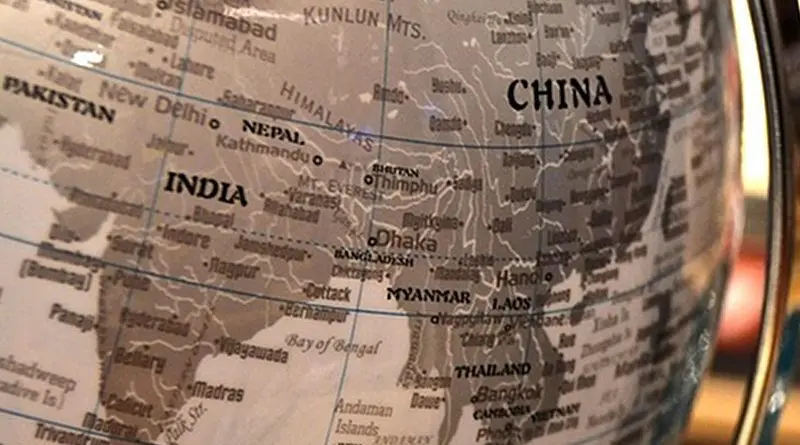Buck Passing In South Asia And Its Effects On Regional Peace – OpEd
At the end of World War II, policymakers in the United States were unable to perceive what kind of threat they are facing from the Soviet Union. In this relatively ambiguous situation US Chargé d’Affaires in Moscow, George Kennan, sent a long telegram in which he wrote about the policymaking process of the Soviet Union and how the US can respond in appropriate way.
Later on, in 1947 George Kennan published an article in Foreign Affairs magazine with the name Mr. X In that article, Kannan stated that the United States should adopt a policy of containment towards the Soviet Union. It will be a long term policy in which the US should actively try to contain the Soviet Union within its geographical boundaries. Expansion of the Soviet Union is a threat not only for the United States but also for the whole free world. Containment was the policy largely adopted by the United States for more than four decades during Cold war though there were some points, in addition to containment, the US was also working on Policy of “Rollback “USSR from its satellite states.
With emerging Chinese power many observers are debating about containment policy of US against China.In the last couple of decades, China emerged as a strong economic and military power in Asia. With its roots in the strong communist system, the US perceives China as an emerging threat. Therefore it is trying to do regional balancing against growing Chinese influence. This regional balancing is sometimes also interpreted as containment of growing Chinese influence United States has very strong military presence in South East Asia and it has very close military and economic ties with South Korea, Japan, Taiwan and other South East Asian states which clearly demonstrates that the United States want to have check on growing Chinese power in the region.
But in the case of South Asia story is very different. South Asian states share a long border with China and slowly Chinese influence is growing in neighboring states.But in this region, the United States has an active military presence only in Afghanistan. US negotiated with the Afghan Taliban which might end US presence in Afghanistan. (Though these talks were canceled by President Trump, there are a fair chance that this peace negotiation might start very soon).
So what kind of policy the United States has adopted in South Asia.Famous scholar of international relation John Joseph Mearsheimer in his book “The Tragedy of great power politics,” wrote that, at some points, hegemon power use policy of buck-passing to contain the influence of an emerging power. According to this policy, the already present hegemon of the world will help, a state which is present in the region of an emerging power, to strengthen its capabilities so that it can have a check on emerging great power (Mearsheimer, 2001).
In the case of South Asia, cooperation between the United States and India clearly demonstrates that United States has passed the buck to India to contain Chinese power in South Asia. Historically the United States and could not establish very good relation with India.In fact India’s arch-enemy, Pakistan was an ally of the United States, while India was closer to the Soviet Union. But in the last couple of decades, the United States is continuously helping India to upsurge its capabilities.
The US-India nuclear deal of 2008 was the turning point in building strategic partnership between both states. This deal permitted India to buy nuclear-related material from the United States. United States is also working to help India in getting NSG membership though NSG was established as a reaction to the Indian nuclear test of 1974. In November 2010 When US president Barack Obama visited India he supported the idea to include India in United Nations Security Council.
Trade volume between two states is now more than $100 billion and the United States is second-largest arms exporter to India. It clearly demonstrates that bilateral Indo-US relations growing in an upward trajectory at a very fast rate.
But this partnership will have very strong effects on South Asian politics. Historically Pakistan remained an ally of United States. When Pakistan’s Prime Minister Imran Khan visited the United States in July 2019 and then in September US President Donald Trump asked that, he can mediate between India and Pakistan on Kashmir issue.it started a debate in both India and Pakistan that how the US might be helpful in solving longstanding Kashmir issue. But India revoked the status of occupied Kashmir on 05 August 2019 and imposed curfew to stop any kind of protest.
More than two months have possessed still life in Kashmir has not come to normality . There is a severe humanitarian crisis in which millions of people are caged in a small valley by Indian security forces. Because of the historical United States’ stance of supporting human rights and freedom struggle, Pakistan still feels that the US might intervene to solve this Kashmir crisis. But in this realist world of self-interest, both states are in close strategic partnership because they have now a common goal to achieve (Contain Chinese influence).
In this changing geopolitical scenario, the chance of US intervention in Kashmir is very faint at its best.
*Muhammad Rizwan is research of MS International Relations at COMSATS University Islamabad. He can be reached at [email protected]

